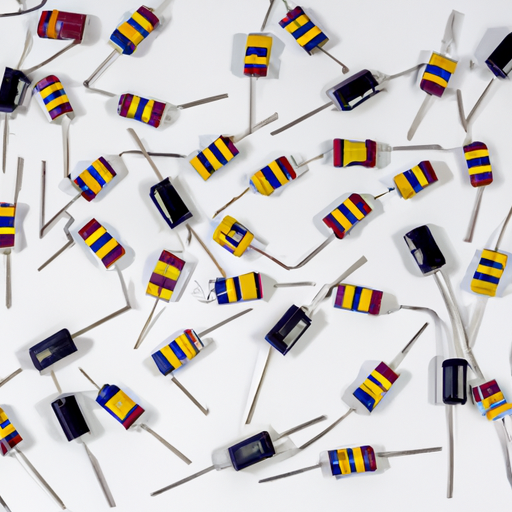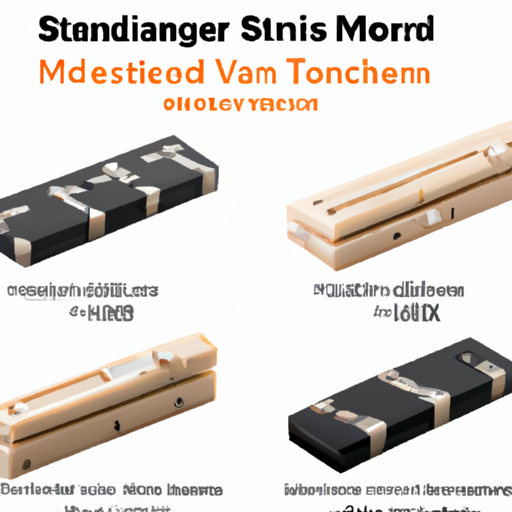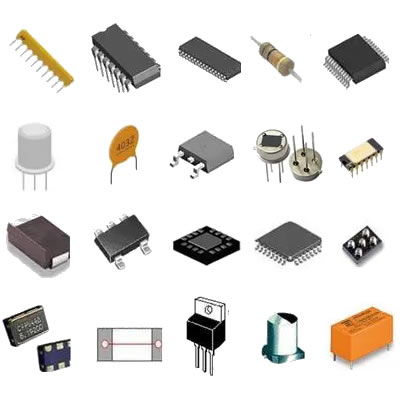What are the top 10 popular standard resistor models?
What are the Top 10 Popular Standard Resistor Models?
Introduction
Resistors are fundamental components in electronic circuits, playing a crucial role in controlling current flow and voltage levels. They are essential for ensuring that electronic devices function correctly and safely. Standard resistor models are widely used in various applications, from consumer electronics to industrial machinery, due to their reliability and performance. This article aims to provide an informative guide on the top 10 popular standard resistor models, helping engineers and hobbyists alike make informed decisions when selecting resistors for their projects.
1. Understanding Resistor Basics
A resistor is a passive electronic component that resists the flow of electric current, creating a voltage drop across its terminals. The relationship between resistance (measured in ohms), voltage (volts), and current (amperes) is defined by Ohm's Law, which states that \( V = I \times R \). This fundamental principle is critical for designing circuits that require specific voltage and current levels.
Resistors come in various types, including fixed, variable, and specialty resistors. Fixed resistors have a constant resistance value, while variable resistors, such as potentiometers, allow users to adjust the resistance. Specialty resistors are designed for specific applications, such as fusible resistors for overcurrent protection.
2. Criteria for Selecting Resistor Models
When selecting resistor models, several criteria should be considered:
Tolerance and Accuracy: Tolerance indicates how much the actual resistance can vary from its nominal value. High-precision applications require resistors with low tolerance levels.
Power Rating and Thermal Stability: The power rating indicates the maximum power a resistor can dissipate without overheating. Thermal stability is essential for maintaining performance under varying temperature conditions.
Temperature Coefficient and Environmental Considerations: The temperature coefficient measures how much a resistor's resistance changes with temperature. Environmental factors, such as humidity and exposure to chemicals, can also affect resistor performance.
Size and Packaging Options: The physical size and packaging of resistors can impact their suitability for specific applications, especially in compact electronic devices.
3. Overview of Standard Resistor Models
Standard resistor models are widely accepted designs that adhere to specific performance criteria, making them suitable for various applications. Standardization simplifies the design process for engineers and manufacturers, ensuring compatibility and reliability across different devices. This article will explore the top 10 popular standard resistor models, highlighting their characteristics and applications.
4. Top 10 Popular Standard Resistor Models
4.1. Carbon Film Resistors
Carbon film resistors are made by depositing a thin layer of carbon on a ceramic substrate. They are known for their low cost and decent performance. Common applications include general-purpose circuits, audio equipment, and consumer electronics. Advantages include good stability and low noise, making them suitable for many applications.
4.2. Metal Film Resistors
Metal film resistors are constructed using a thin film of metal, providing better accuracy and stability than carbon film resistors. They are widely used in precision applications, such as instrumentation and audio equipment. The benefits of metal film resistors include low noise, high stability, and excellent temperature coefficients.
4.3. Wirewound Resistors
Wirewound resistors are made by winding a metal wire around a ceramic or fiberglass core. They are capable of handling high power and are often used in high-power applications, such as power supplies and motor controls. Their construction allows for excellent thermal stability and low inductance, making them ideal for high-frequency applications.
4.4. Thick Film Resistors
Thick film resistors are created by printing a thick layer of resistive material onto a substrate. They are commonly used in surface mount technology (SMT) applications due to their compact size. Advantages include low cost and good performance in a wide range of applications, including consumer electronics and automotive systems.
4.5. Thin Film Resistors
Thin film resistors are manufactured using a thin layer of resistive material, providing high precision and stability. They are often used in applications requiring high accuracy, such as medical devices and precision measurement equipment. Their low noise and excellent temperature coefficients make them suitable for sensitive applications.
4.6. SMD Resistors (Surface Mount Device)
SMD resistors are designed for surface mount technology, allowing for compact and efficient circuit designs. They are widely used in modern electronics, including smartphones, tablets, and other compact devices. The benefits of SMD resistors include reduced size, lower manufacturing costs, and improved performance in high-density circuits.
4.7. Variable Resistors (Potentiometers)
Variable resistors, or potentiometers, allow users to adjust resistance levels manually. They are commonly used in user interfaces, such as volume controls and brightness adjustments. Different types of variable resistors include rotary potentiometers, slide potentiometers, and digital potentiometers, each suited for specific applications.
4.8. Fusible Resistors
Fusible resistors are designed to act as both a resistor and a fuse, providing overcurrent protection in circuits. When the current exceeds a certain threshold, the resistor will fail open, preventing damage to other components. They are commonly used in power supplies and other applications where overcurrent protection is critical.
4.9. High Voltage Resistors
High voltage resistors are designed to operate in high-voltage environments, providing reliable performance while maintaining safety. They are used in applications such as power distribution, high-voltage testing, and medical equipment. Design considerations include insulation materials and construction techniques to ensure safety and reliability.
4.10. Precision Resistors
Precision resistors are designed for applications requiring high accuracy and stability. They are commonly used in measurement and calibration equipment, where even small variations in resistance can lead to significant errors. Precision resistors often have low temperature coefficients and tight tolerances, making them ideal for critical applications.
5. Comparison of Resistor Models
To help readers understand the differences between the various resistor models, the following table summarizes key specifications, including tolerance, power rating, and typical applications:
| Resistor Model | Tolerance | Power Rating | Typical Applications |
|------------------------|-----------|--------------|------------------------------------|
| Carbon Film | ±5% | Low | General-purpose circuits |
| Metal Film | ±1% | Medium | Precision instrumentation |
| Wirewound | ±1% | High | High-power applications |
| Thick Film | ±5% | Medium | Consumer electronics |
| Thin Film | ±0.1% | Low to Medium| Precision measurement |
| SMD | ±5% | Low to Medium| Modern electronics |
| Variable (Potentiometer)| N/A | Varies | User interfaces |
| Fusible | N/A | Low to Medium| Overcurrent protection |
| High Voltage | ±5% | High | High-voltage circuits |
| Precision | ±0.01% | Low to Medium| Measurement and calibration |
This comparison highlights the trade-offs between different resistor types, allowing engineers to select the most suitable model for their specific needs.
6. Future Trends in Resistor Technology
As technology continues to evolve, so do the materials and manufacturing processes used in resistor design. Innovations such as advanced materials, miniaturization, and the integration of resistors into printed circuit boards (PCBs) are shaping the future of resistor technology. The rise of the Internet of Things (IoT) is also driving demand for smaller, more efficient resistors that can operate in diverse environments.
Emerging applications, such as electric vehicles and renewable energy systems, are creating new challenges and opportunities for resistor manufacturers. As the market demands more efficient and reliable components, the development of new resistor technologies will play a crucial role in meeting these needs.
7. Conclusion
Selecting the right resistor model is essential for ensuring the performance and reliability of electronic circuits. Understanding the characteristics and applications of various standard resistor models can help engineers and hobbyists make informed decisions. The top 10 popular standard resistor models discussed in this article provide a solid foundation for anyone looking to deepen their knowledge of resistors and their role in electronic design.
As technology continues to advance, staying informed about the latest trends and innovations in resistor technology will be crucial for anyone involved in electronics. We encourage readers to explore further and continue learning about the fascinating world of electronic components.
References
- "Resistor Basics." Electronics Tutorials. [Link]
- "Understanding Resistors." Digi-Key Electronics. [Link]
- "Types of Resistors." Mouser Electronics. [Link]
- "Resistor Selection Guide." Texas Instruments. [Link]
- "Future Trends in Resistor Technology." IEEE Spectrum. [Link]
This blog post provides a comprehensive overview of standard resistor models, their characteristics, and applications, serving as a valuable resource for anyone interested in electronics.




